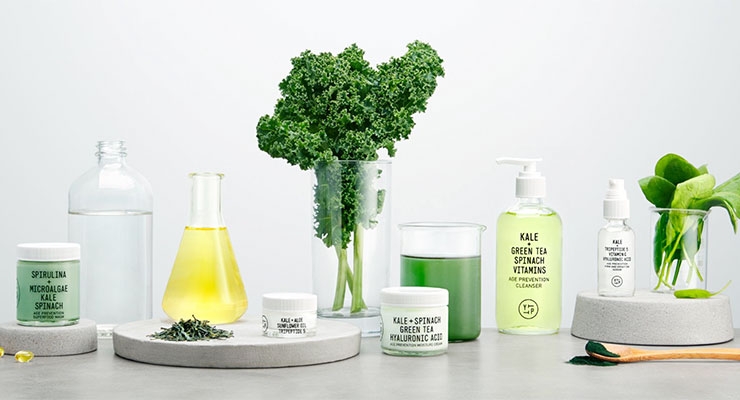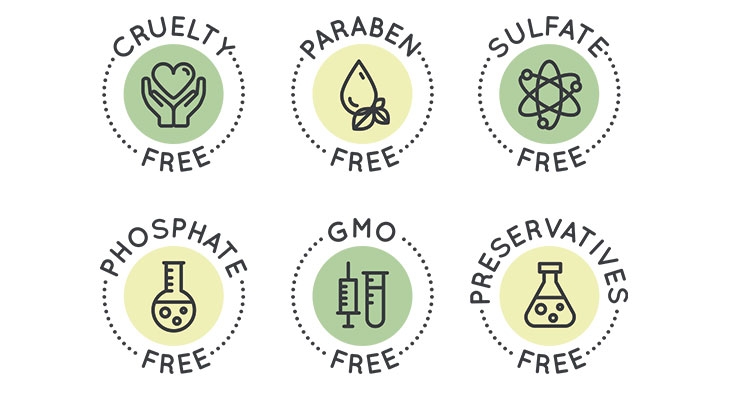Nick Vaus, Free the Birds 06.04.18
As far as consumer trends go, the clean eating movement is a veritable revolution. Instagram hashtags #eatclean and #vegan run at nearly 50 million and 57 million hits respectively. Clean eating cookbooks and coaching programs are everywhere, and people are flocking to premium food that has minimal interference, and that’s often plant-based. Brand packaging reflects this—think natural design cues and shorter, clearer ingredient lists.
And where food goes, the beauty business follows. Superfoods like kale, chia seeds, matcha and pomegranate now regularly feature on beauty shelves—from top of the market Orveda’s £350 moisturizer with Kombucha black tea, through to Youth To The People’s nutrition-focused ranges and Yes To’s mass market stable of food-based products.
But the clean eating movement has far greater implications for beauty brands than just hero ingredient “flavor of the month.” It’s a reaction to an increasingly toxic environment.
Obesity, allergies, diabetes and cancer rates are all on the rise. Then there are food industry practices like GMO and factory farming. Mainstream diet advice seems to contradict itself from month to month. So it makes perfect sense to move away from additives and E-numbers and go back to basics, to foods we can understand.
That consumer fear of toxicity, of hidden dangers, is what all beauty brands need to deal with, particularly in the United States where the banned ingredient list is scarily short.
It’s no longer just hippies poring over product labels to check for undesirable ingredients. Everyday customers now recognize that the skin is the biggest organ, and what you put on it matters. Beauty is not just fashion, it’s health.
Apps like Think Dirty take full advantage of consumer desire to make healthy choices. But they’re only as a good as the information supplied by brands, and lax regulations for what’s called “natural” and “organic” mean that much of that is greenwash. Plus natural doesn’t always mean non-toxic, non-allergenic or environmentally sustainable. Mica is a naturally occurring mineral, but its use in beauty products is definitely not cruelty-free to the environment.
How can beauty brands reassure consumers that their products are clean, safe and effective? Organic certification via COSMOS standards covers a lot of ground, but not all products are suitable, and it doesn’t deal with things like allergy, vegan or Halal needs.
Traffic light systems for food give definitive measurements of key nutritional information. A silver bullet to the problem could be for big beauty businesses to invest in a similar, transparent, globally-recognized system for beauty, built on robust study of consumer decision-making.
In the absence of such standards, beauty brands must take matters into their own hands to improve their “cleanliness.” That means doing two things. One is to review formulations, swapping out potentially harmful chemical ingredients for natural ones if possible. The other is to be completely honest and transparent about what’s inside the pack. As Sarah Brown of Pai Skincare describes it: “That means listing ingredients in plain English, not using pseudoscience to describe products, and generally presenting things as they are, warts and all.” Quite.
About the author:
Nick Vaus is Partner & Creative Director, Free the Birds
Free the Birds is the brand communication and design agency formerly known as DewGibbons + Partners. Now 21 years old, clients include Bayer, Coty, Davidoff, Lindt, Nestlé and Procter & Gamble. Its boutique, tailored approach is built on curiosity, flexibility and smart design thinking which drives successful outcomes for compassionate brands. Connect on Twitter.
And where food goes, the beauty business follows. Superfoods like kale, chia seeds, matcha and pomegranate now regularly feature on beauty shelves—from top of the market Orveda’s £350 moisturizer with Kombucha black tea, through to Youth To The People’s nutrition-focused ranges and Yes To’s mass market stable of food-based products.
But the clean eating movement has far greater implications for beauty brands than just hero ingredient “flavor of the month.” It’s a reaction to an increasingly toxic environment.
Obesity, allergies, diabetes and cancer rates are all on the rise. Then there are food industry practices like GMO and factory farming. Mainstream diet advice seems to contradict itself from month to month. So it makes perfect sense to move away from additives and E-numbers and go back to basics, to foods we can understand.
That consumer fear of toxicity, of hidden dangers, is what all beauty brands need to deal with, particularly in the United States where the banned ingredient list is scarily short.
It’s no longer just hippies poring over product labels to check for undesirable ingredients. Everyday customers now recognize that the skin is the biggest organ, and what you put on it matters. Beauty is not just fashion, it’s health.
Apps like Think Dirty take full advantage of consumer desire to make healthy choices. But they’re only as a good as the information supplied by brands, and lax regulations for what’s called “natural” and “organic” mean that much of that is greenwash. Plus natural doesn’t always mean non-toxic, non-allergenic or environmentally sustainable. Mica is a naturally occurring mineral, but its use in beauty products is definitely not cruelty-free to the environment.
How can beauty brands reassure consumers that their products are clean, safe and effective? Organic certification via COSMOS standards covers a lot of ground, but not all products are suitable, and it doesn’t deal with things like allergy, vegan or Halal needs.
Traffic light systems for food give definitive measurements of key nutritional information. A silver bullet to the problem could be for big beauty businesses to invest in a similar, transparent, globally-recognized system for beauty, built on robust study of consumer decision-making.
In the absence of such standards, beauty brands must take matters into their own hands to improve their “cleanliness.” That means doing two things. One is to review formulations, swapping out potentially harmful chemical ingredients for natural ones if possible. The other is to be completely honest and transparent about what’s inside the pack. As Sarah Brown of Pai Skincare describes it: “That means listing ingredients in plain English, not using pseudoscience to describe products, and generally presenting things as they are, warts and all.” Quite.
About the author:
Nick Vaus is Partner & Creative Director, Free the Birds
Free the Birds is the brand communication and design agency formerly known as DewGibbons + Partners. Now 21 years old, clients include Bayer, Coty, Davidoff, Lindt, Nestlé and Procter & Gamble. Its boutique, tailored approach is built on curiosity, flexibility and smart design thinking which drives successful outcomes for compassionate brands. Connect on Twitter.































